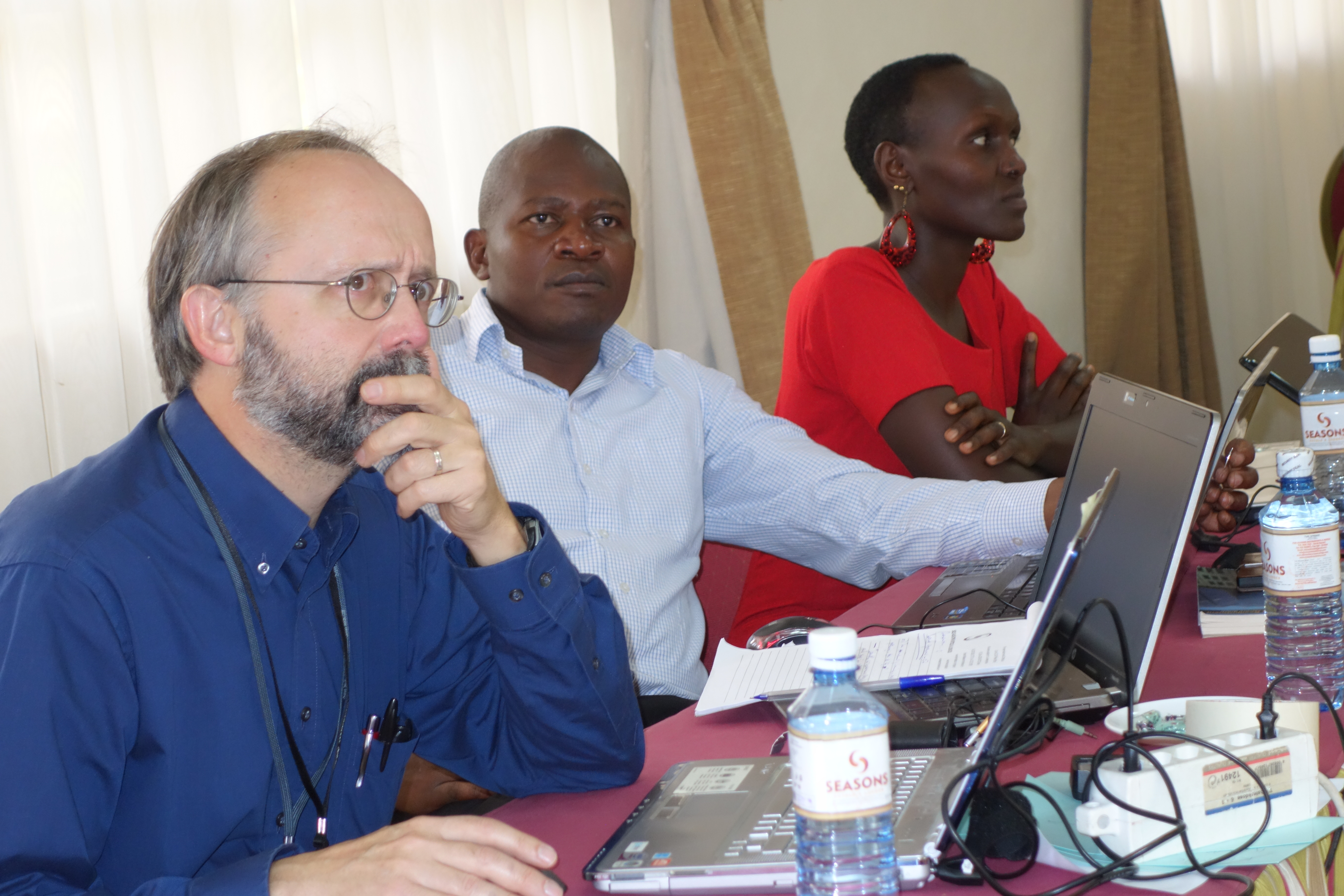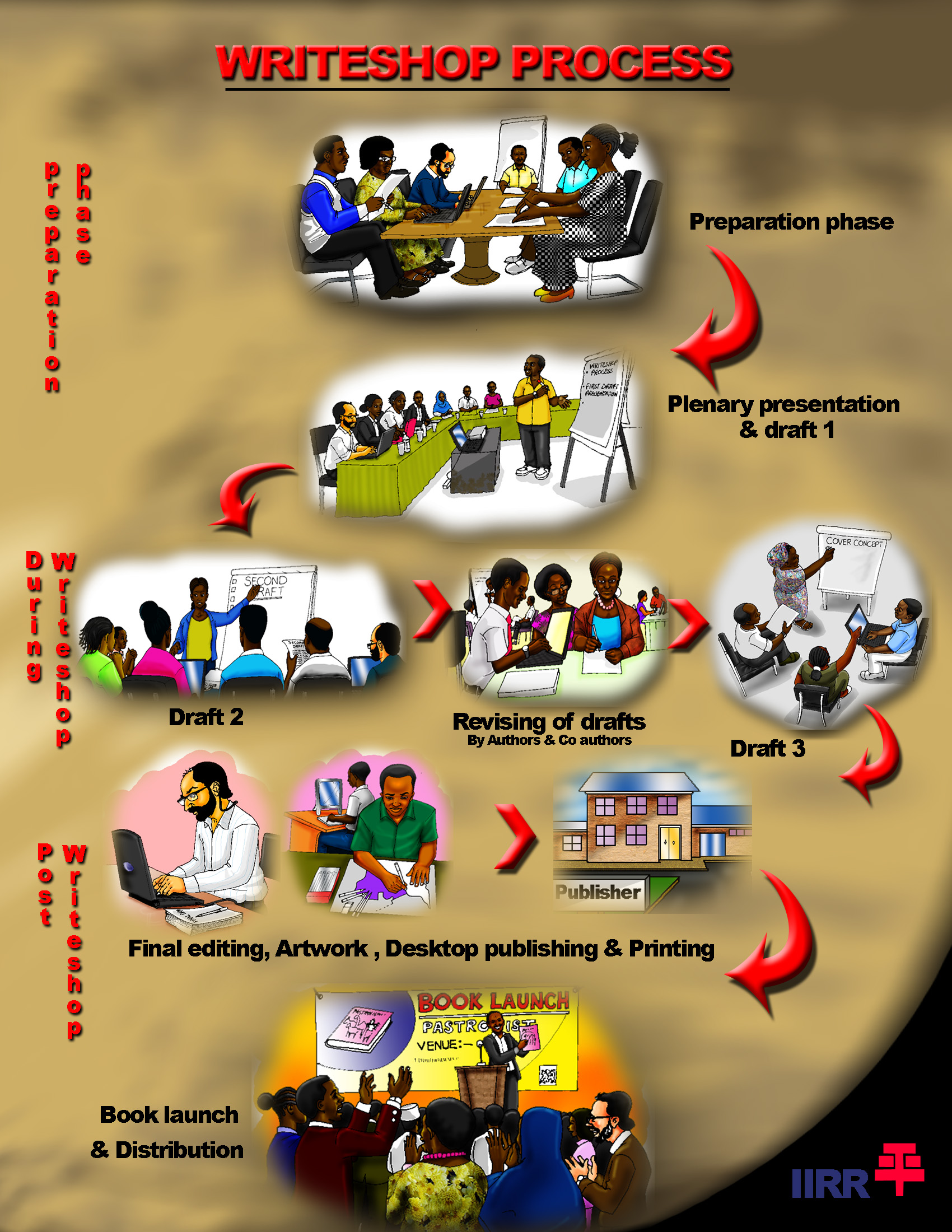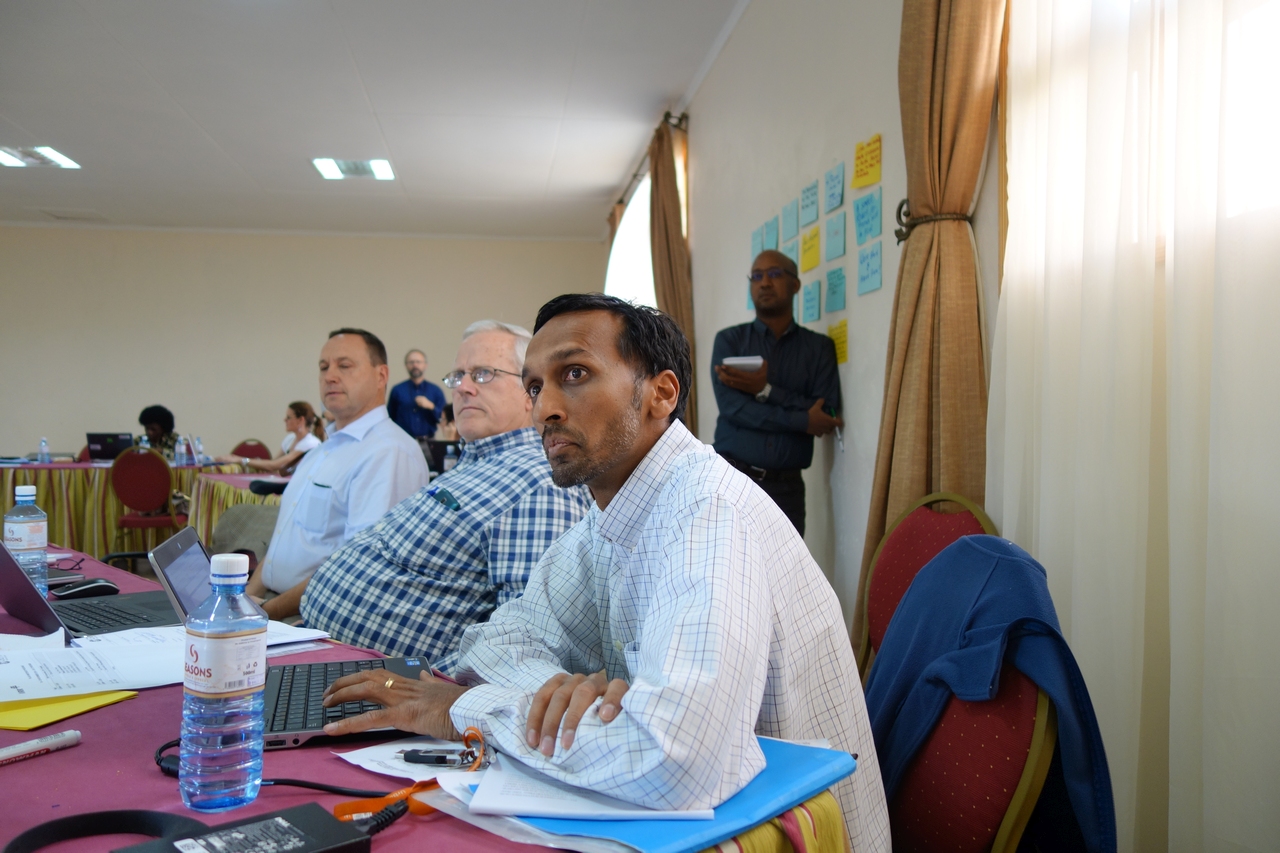The Writeshop process: what good is it?
Writeshop is an intensive participatory process that involves a diverse range of development actors and staff with different skills. Development workers, especially those who work in the field, are often too busy to sit down, reflect and document their field experiences and the outcomes of their work. The writeshop process, which was pioneered by IIRR in the early 1990s, was designed to overcome this critical problem. It brings together several development actors (extension officers, scientists, researchers, and community leaders) together with publication practitioners (authors, editors, artists, and desktop publishing specialists) under one roof to generate the written material needed for a specific book. This is accomplished in a remarkably short period of time. The process is flexible and participatory.
In recent years the process has been adapted to developing proposals, evaluation framework, case studies, position papers, academic textbooks, children’s storybooks, curricula, practical guides, website design and so on.
Writeshops last from 3 to 12 days and could involve 10 to 60 participants depending on size of the publication and complexity of the subject. Larger publications require a relatively long lead-time for planning the content and logistics. IIRR has produced over 100 publications using the writeshop process and has freely shared this process with dozens of organizations who are free to adapt the process for their own use. Click to view publications list

Why Writeshop? What is it?
There may be a lot of information about your activities, but it is scattered or in the wrong format, and much of it is in people’s heads rather than written down on paper. Maybe you need to develop simple extension brochures, but the only material available is in research reports written in scientific jargon, while useful indigenous knowledge should also be included. Another example is when an organisation has been carrying out development activities for many years, and its staff have built up many rich experiences, but they are not written down anywhere. The staff are excellent in the field, but they find it difficult to write; the risk is that when somebody leaves the organisation, his or her knowledge will be lost. A similar case could be when coordinating a network of partners who implement activities in a certain subject area. The partners would like to learn from one another. They have produced a lot of monitoring reports that tell the story of their work, but pulling out the valuable information is going to be rather difficult: you might need to question each of the authors in detail before you can document it properly.
All such situations have certain things in common:
- The information exists mainly in people’s heads, but it is needed on paper.
- No single person is the expert on a subject. Many different people can each contribute part of the information, and they may have different ideas about the subject. Agreement is possible, but only if people come together to discuss.
- The information has to be pulled out from a large body of data – reports, research articles, people s memories – and then translated from one level of language (scientific jargon or farmer’s language) into another (e.g.. training materials).
- The information needs to be checked by several people – other experts, scientists, potential users – before it can be published.
A Solution: a Writeshop
A “writeshop” is an intensive, participatory workshop that aims to produce some kind of written output. This may be a set of extension brochures, a bound book, set of leaflets, or a training manual. Participants may include scientists, researchers, government personnel, teachers, NGO staff, extension agents, farmers and other local people: anyone who has, in one way or another, been involved in the experiences to be documented. A team of facilitators, editors, layout designers, artists and logistics staff assists these participants.
The writeshop process was pioneered by the International Institute of Rural Reconstruction and is being adapted by many institutions. Altogether, this writeshop method has yielded more than 50 user-friendly manuals, tool kits, field guides, posters, flyers, training modules, etc.
Before the writeshop, a steering committee, task force or planning group develops a vision for the publication: its target audience, objectives, subject area, etc. (for regionally drown publications, IIRR uses in-country consultative meetings instead of task force). The group lists potential topics within the broad subject area, develops guidelines for authors, and invites “specialists” to write a first draft on a certain topic. These specialists are not necessarily scientists or senior staff’; the committee may also invite extension personnel or farmers to write about their own particular area of experience. The logistics and follow up of such intensive activity is followed up by a secretariat.
Early in the writeshop, the participants brainstorm ideas for further topics to be included in the publication. These new topics are given to knowledgeable participants for development and presentation during the writeshop. During the writeshop itself, each participant presents the first draft of his or her paper. The other participants have a chance to give comments on the draft and suggest revisions. The facilitator allows as much discussion as possible so that everyone can contribute his or her own knowledge on the topic. The aim is not to criticize the manuscript, but to improve it, add to it – and often to remove unnecessary information – so that it fits the end product and is appropriate for the target audience.
After his or her presentation, each presenter will talk to an editor, who has also been taking notes of the discussion. The editor helps to revise and edit the draft and to ask for illustrations, usually line drawings from one of the artists, to accompany the text. The edited text and the illustrations then go to a computer operator, who puts them together as a second draft. The revised drafts of each participant are then presented again and the audience can provide comments and suggestions for a second time. After this series of presentations, an editor and artist(s) again help to revise the drafts. Towards the end of the writeshop. It may be possible to make this third draft available to participants for final comments and revisions. The final version, therefore, can be completed, printed and distributed soon after the writeshop.

Advantages of Writeshop
Flexibility
Writeshop is a flexible process that engages various levels of experts under one roof to produce simple user-friendly materials in a short period of time. More specifically the following are advantages of writeshop
The writeshop process is extremely flexible. The repeated presentations, comments and revision of drafts allow for papers to be reviewed and revised thoroughly. The process also allows for new topics to be developed during the writeshop, and topics to be combined, dropped or split into parts. The basic pattern of the writeshop can be varied in many ways. For example, the participants may break into smaller groups to discuss specific topics, write drafts and present them to the whole group for comments. Participants may write examples or brief stories that illustrate a particular point that can be included in a larger chapter. They can also be asked to gather additional information about techniques or processes, resource organisations or reference materials that might enrich the content of the final product. The schedule for only the first one or two days of the writeshop is known beforehand. A schedule for the following day is prepared each evening, and it may even change again several times as the day progresses.
The process can be modified and adapted to suit individual situations and produce various products. Writeshops have lasted from 3 days to 12 days in length, tackling from 10 to more than 100 manuscripts, and with between 15 and 80 participants
Writeshops have been conducted in many languages, and it is possible to conduct a single writeshop in several languages: using interpreters, for example, indigenous livestock healers who spoke only their own languages made major contributions to a book on ethnoveterinary medicine in Kenya. While the approach described here relies heavily on computers, the method can also be adapted for use at the field level where there may not be any skilled operators or a reliable electricity supply.
Multiple contributions
Documenting an experience can take a great amount of time. The process of writing, illustrating, reviewing and revising can be long and dull. Writeshops can speed up and improve this process. Having the resource people, editors, artists and other documentation tools together at the same time and place makes this possible. It also allows for all participants’ contributions to be included, taking advantage of the diverse experience and expertise of all present. It allows ideas to be validated by a range of experts in the field. Members of the intended audience or readers (e.g., teachers, farmers and extension personnel) can help pre-test the text and illustrations during the writeshop. In essence, each manuscript is reviewed dozens of times by key resource people, all within the same short period of time.
Multiple products
IIRR has used writeshop to suit the various needs of clients. It has helped them to simplify the scientific papers, produce series of flyers (CTA), produced training modules (UNICEF), helped generate position paper (CIDSE), field guide (FAO), cases compilation (Cordaid, SNV) and several books and manuals with wide range of organizations. Other benefits like CDs, policy briefs, flyers, audio cassettes can be developed once the base material like book or manual is produced
Coordination and Facilitation
The number of people needed to coordinate and facilitate a writeshop depends on the number of participants and size of manuscripts to be processed. For a small writeshop with 20 participants, one facilitator, an editor, an artist and someone to take care of logistics may be enough. A skilled facilitator is vital however. He or she must be able to guide the participants and manage the discussions.
They must have a good understanding of the subject area and a clear idea of what types of information need to go into the final publication. Tact is important: some authors may resent seeing a manuscript over which they have sweated for many hours being torn apart by their fellow participants or the editor.
A skilled editor (or editors) is just as important. The editor works with authors, and guides them in rewriting their drafts. Very often an editor will take over responsibility for rewriting the draft based on information provided by the authors. Again, tact is vital. as is an ability to organize and structure information, and to present ideas in a way that is easy for the intended audience to understand.

